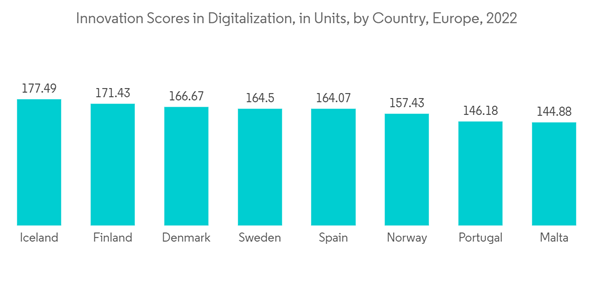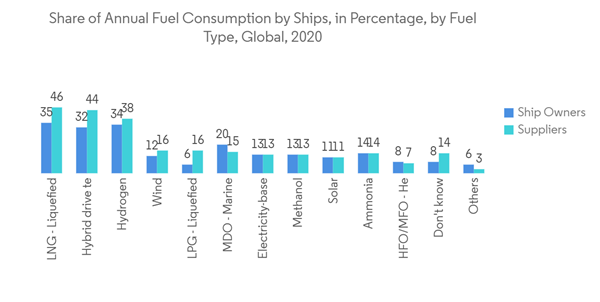Key Highlights
- The inland water freight transportation market comprises of companies (organizations, sole proprietors, and partnerships) that offer inland water freight transportation of cargo on lakes, rivers, or intracoastal waterways. Only items and services that are exchanged between parties or sold to final customers are covered.
- For the transportation of products in Europe, inland waterway travel is essential. Hundreds of cities and industrial areas are connected by more than 37,000 kilometres of waterways. A network of waterways connects 13 Member States. It is possible for inland waterway transportation to increase its modal share significantly. Inland waterway transportation is distinguished from other means of transportation by its dependability, energy efficiency, and significant capacity for greater exploitation. These other routes of transportation are frequently plagued by congestion and capacity issues.
- A cost-effective alternative to road and rail transportation is inland canal transportation. In terms of energy usage and noise emissions, it offers a particularly eco-friendly solution. It uses around 17% less energy per km/ton of freight than road transport and 50% less than rail transport. A high level of safety is also guaranteed by inland waterway transportation, particularly when it comes to the delivery of hazardous materials. In densely populated areas, it also helps to relieve overcrowded road networks of traffic.
Europe Inland Water Freight Transport Market Trends
Digitization of inland-waterway transport
Within Europe, inland-waterway transport (IWT) is important for the movement of goods. This mode of transportation has a number of benefits, including safety, environmental friendliness, and the release of road capacity. A more adaptable logistics industry with more alternatives for transportation will result from the digitization of inland waterway transportation. Long-term, this will have a positive ripple impact on employment, consumption, and manufacturing, strengthening the European economy as a whole. Additionally, it is consistent with the EU's strategy to digitize markets wherever possible, known as the Digital Single Market Strategy. Digital Inland Waterway Area (DINA) is a concept to interconnect information between IWT’s stakeholders and with other transport modes.DINA architecture is:
Adding more (real-time) data to RIS will increase their functionality, interoperability, and usability for barge operators using new on-board e-IWT tools and apps.
Barge operators can manage their own data and operations thanks to a data platform. This should make it possible for barge operators to carefully share data with other parties, including public authorities (for reporting needs), (inland) ports, and terminals.
Integration with shippers' and LSP's booking and transport management platforms should improve IWT's visibility and integration into the entire logistics chain, which includes different modalities.
Use of alternative fuels for emission control
The European Commission is aiming to enhance the transition of freight transport to rail and inland shipping in order to minimise CO2 emissions from EU transportation. This objective is reflected in the European Green Deal and the Sustainable and Smart Mobility Strategy, two recent Commission policies that also lay out the actions required to enhance the use of IWT and short sea shipping. The industry must overcome significant obstacles and develop into a digital, greener, and more resilient sector in order to fully fulfill its function.Future replacements for Heavy Fuel Oil (HFO) and Marine Diesel Oil(MDO) could play a key role in lowering emissions below necessary levels. Additionally, it is predicted that 30-50 million tonnes of fuel (LSF) be consumed annually in the ECAs, and that number will rise as more areas are added to the ECAs in the future (DNV 2015). The introduction of alternative, low carbon fuels can fulfill both the need for low sulphur fuels as well as the requirement to reduce GHG emissions, provided that these fuels and the required technologies are delivered at competitive price levels.
liquefied natural gas (LNG), electricity, biodiesel, and methanol are the alternative fuels that are most frequently taken into consideration. Liquefied petroleum gas (LPG), dimethyl ether (DME), biomethane, synthetic fuels, hydrogen (especially for use in fuel cells), hydrogenation-derived renewable diesel (HDRD), and pyrolysis oil are further fuels that could be used in the future. Additionally, it is possible to adhere to the rules and promote the switch to alternative fuels by using fuels.
Europe Inland Water Freight Transport Market Competitor Analysis
Viking Line, Rhenus Group, Mediterranean Shipping Company S A, Construction Navale Bordeaux, MEYER WERFT GmbH & Co., KG, Bayliner, European Cruise Service, and Euro RIJN B,V are market participants for Inland Water Freight Transport in Europe. The competition amongst service providers is further heightened by the strict regulatory requirements that must be met. Businesses participate in M&A transactions to develop their product lines and expand regionally.To increase market share, manufacturers and service providers prioritise customer happiness, capacity growth, and fleet modernization. The enterprises are able to thrive in this fiercely competitive market by keeping constant touch with shipping companies throughout the region.
Additional Benefits:
- The market estimate (ME) sheet in Excel format
- 3 months of analyst support
Table of Contents
Companies Mentioned (Partial List)
A selection of companies mentioned in this report includes, but is not limited to:
- Bayliner
- Beneteau Group
- CMA CGM Group
- Construction Navale Bordeaux
- DFDS
- EUROPEAN CRUISE SERVICE
- EURO-RIJN B.V.
- MEYER WERFT GmbH & Co., KG
- MSC Mediterranean Shipping Company S.A
- Rhenus Group
Methodology

LOADING...










